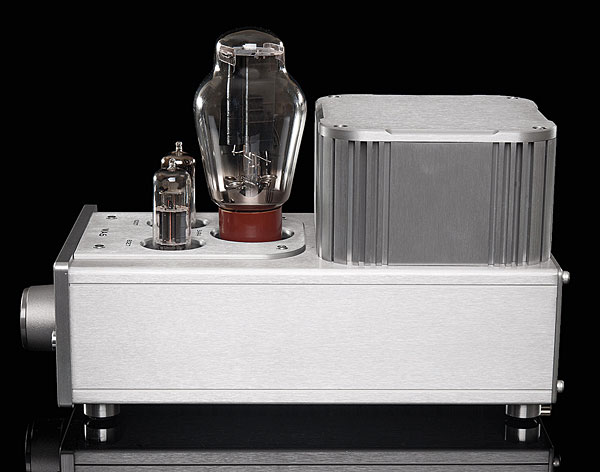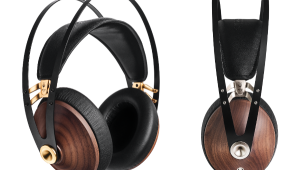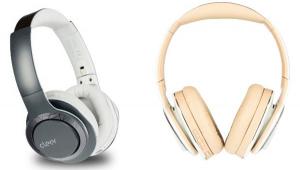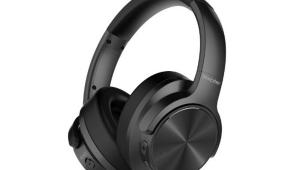580mw from 13lbs! The word 'stable' comes to mind. Would be nice to get at least a cheap AC cord with it though, the implication of not including one is that an esoteric is recommended.
The 8 hour limit would probably never be met with a headphone amp, but it would be interesting to get the reasoning for that.
Great review Mark...
Woo Audio WA6 Headphone Amplifier Page 2
Tube Tied
A huge, smooth, mellow midrange was the dominant characteristic of the WA6 regardless of which headphones I plugged into it. It imaged generously and was especially rich in the lower midrange but became reticent as it reached into the upper mids and highs. This was more noticeable with some headphones than others. With the right headphones and content, it was also capable of substantial bass.
I found myself sorting headphones (yes/no/maybe) by the way the Woo complemented their top ends. The Sony MDR-V6 ($110) was an emphatic yes, its inherent brightness neatly rolled off by the amp. They were greater than the sum of their parts. In the maybe category were headphones as inexpensive as the NAD VISO HP50 ($299) or as pricey as the Audeze LCD-X ($1,699). These more neutral headphones allowed the amp to speak in its own voice, and it usually had something good to say. In the no category, ironically, were headphones that on their own tend to mimic the amp’s warm voicing: the Sony MDR-1R ($300), Sennheiser HD600 ($400), and Oppo PM-1 ($1,099). Combining two polite top ends was too much of a good thing, smearing cymbals and blurring imaging. I settled down for prolonged listening with the Audeze and the less expensive Sony, the MDR-V6. (Most demo material was provided by HDtracks apart from one CD rip.)

The Sony has a strong treble, and the Woo didn’t quite tube it into submission. But it did take the edge off, allowing the Sony to uncover nuances in Linda Thompson’s Won’t Be Long Now (ALAC ripped from CD) with the finely aged vocal detail in “Love’s for Babies and Fools” standing in contrast to the warmer vocal tone of “Paddy’s Lamentation” (recorded at Abbey Road). In a couple of Nick Drake tracks—“Things Behind the Sun” from Pink Moon and “Hazey Jane II” from Bryter Layter (96/24 FLAC)—the Woo/Sony union dried out too much of the rich vocal texture I’ve come to know and love, though the bass guitar in the latter track was surprisingly deep and well defined.
Of all the headphones I used with the Woo, the Sony was best at reproducing cymbals, and it delivered crisp highs in “Immigrant Song” and “Gallows Pole” from Led Zeppelin III (96/24 FLAC). In “Brite Nitegown” and “Mary Shut the Garden Door” from Donald Fagen’s Morph the Cat (96/24 FLAC), the Woo/Sony pairing juggled percussion, vocals, and horn charts in a way that was snappy, pristine, and hypnotic.
Occasionally the Woo/Sony combo flunked the audition. Its lightweight presentation of the Dave Brubeck Quartet’s “Blue Rondo a la Turk,” from Time Out (96/24 FLAC), denied the drums and piano their proper depth and impact. But strings burst through with beautiful tone color and a commendable absence of grain in Chesky’s recording of Tchaikovsky’s “Waltz of the Flowers,” from Orchestral Spectacular, with Bernard Klee leading the Bruckner Orchester Linz (176.4/24 FLAC).
Reauditioning the same tracks with the Audeze headphones, I noted textures thickening across the board. Linda Thompson’s soprano lost some of its formidable edge but seemed more balanced and natural. Nick Drake’s voice deepened, recovering its customary chestiness and resonance, and the bass guitar seemed better integrated into the arrangements.
The Woo/Audeze combo could definitely rock-n-roll, giving the Led Zeppelin tracks more punch and momentum. I was afraid the same thickening would tip the Donald Fagen tracks into mud—but I must have underestimated the duo, because they delivered greater weight in the upper bass and lower midrange while remaining as rhythmically nimble as the Sony. In the Brubeck “Rondo,” the drums and piano regained the solidity they’d been lacking. In the Tchaikovsky waltz, the string sound became less focused but operated in a bigger space, more reminiscent of a real orchestra in a real hall. In general, the Woo/Audeze combo was more dynamically confident than the Woo/Sony combo, could play louder with less fatigue, and was more comfortable for long-term listening.
Woo Audio’s WA6 headphone amp is powerful medicine. Its sweet, euphonic sound gets the most out of headphones that have an emphatic treble, though it also gets along with headphones that have an uncompromising, across-the-board clarity. While it is forgiving enough to mitigate the worst brutishness of mobile devices and the barbarity of lossy audio, it has no USB input for computer use and doesn’t show its true colors unless harnessed to a high-quality DAC or analog source. But with the right playmates, the WA6 delivers a creamy, grit-free tone that’s not likely to be heard with any solid-state amp.
- Log in or register to post comments





































































